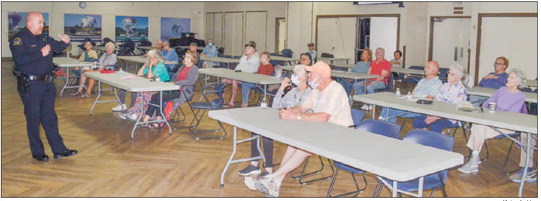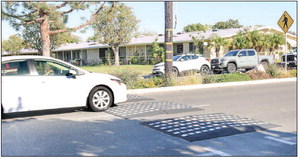Meeting water targets and preserving green space are not mutually exclusive
RESIDENT COLUMN
by Donald R. Hodel
LW contributor
Leisure World Mutuals have been instructed to decide which grass areas to continue to water and keep green and which to stop watering and let them turn brown and die.
Mutual 6 has decided not to water any grass and I understand that the other mutuals might be doing the same, shutting off nearly all water to outdoor landscapes, potentially turning our much beloved, appreciated and regularly utilized lawns into a dystopian hellscape of dead brown grass and dying and dead trees.
The potentially disastrous impacts of the draconian, mostly unnecessary, ill-conceived and unfair water restrictions are a stunning development. While we must respond vigorously and meet targeted water savings, doing so does not preclude continuing to water and keeping grass green in selected areas. Some day, we might have to stop all outdoor watering, but we are not there yet in my opinion. California state, regional and local water conservation rules and regulations indisputably state that an HOA can continue to water grass as long as the HOA, in consultation with its members, designates areas as “functional”; they are used for recreational purposes like walking and sitting under trees with neighbors and family members, walking pets, playing games and sports, exercising and working out, etc. This activity cannot be disputed and is just as critical and pertinent to residents as is the Leisure World Golf Course, which is considered functional and can be watered. In fact, significantly more people likely walk or congregate in daily and weekly recreational activities in Leisure World landscape areas than play golf. While we cannot claim all our grass areas as functional, a significant part of each mutual encompasses areas that could easily and fairly be designated as functional grass and continue to be watered.
Importantly, HOAs cannot be fined for watering grass they designate as “functional” as long as they follow water conservation guidelines.
Rules and regulations also state that trees, even in “non-functional” grass where water has been turned off, are exempt from water restrictions (but still have a few rules to follow about when and how to water). Adequately watering trees in this situation will be difficult. It is recommended for established trees to slowly soak the root zone under the canopy until water penetrates 12-18 inches below the surface. A soaker hose is ideal for this purpose.
According to Seal Beach public works officials, the city will water “functional” grass in its parks and (recreation areas in keeping with) state-mandated landscape water guidelines.
So, if we turn all the water off, how will you feel when you gaze upon our dystopian hellscape and then look over the fence and see green parks in non-Leisure World parts of the city?
For Mutuals that have made the decision to turn off all water to their grass, encourage your Mutual boards to reverse course and designate some areas as functional grass that can continue to be watered and kept green.
Meeting water conservation targets and having green space are not mutually exclusive.
We can have both. Let us work together and show how it can be done.
Donald Hodel is an emeritus environmental and landscape horticulture advisor specializing in palms, trees and landscape management, University of California, Cooperative Extension, Los Angeles County


